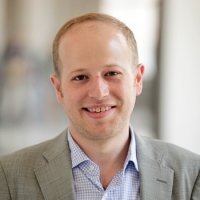The Soviet Union nurtured North Korea’s ability to wage war in the months, days, and even hours leading up to the invasion of South Korea on June 25, 1950, providing essential economic assistance to Kim Il Sung’s fledgling state, and weapons and training for the armed forces.
The North Koreans were fortunate to have a number of advocates across the Soviet leadership. In May 1947, Marshal Kirill Meretskov (chief of the Soviet Civil Administration) and Terentii Shtykov (head of delegation to the Soviet-American Joint Commission on Korea) explained the dire state of infrastructure and industry in northern Korea in a direct plea to Stalin. According to Meretskov and Shtykov, all Japanese engineers had recently left northern Korea, putting the territory north of the 38th parallel “in an extremely difficult position.” Production plans were already faltering.
Personnel from the North Korean People’s Committee – the progenitor of the North Korean state – made repeated requests for Soviet specialists to come and fill the Japanese void.
Meretskov and Shtykov were sympathetic and supportive of such requests, but not because they were good-natured humanitarians. Rather, they believed it was in the strategic interest of the Soviet Union to help Korea. The two men argued that the presence of Soviet engineers would “strengthen the position and influence of our country in Korea for the future” – even after Soviet troops withdrew and the unification of northern and southern Korea into a single independent government.
What if the Soviet Union refused the North Korean request? Meretskov and Shtykov speculated that the stakes were high. If the Americans jumped in to offer help, this would be “to the detriment to our state interests.”
Meretskov and Shtykov were getting the bureaucratic run around from the Soviet Union’s ministries for trade, foreign affairs, and the armed forces – all of which seemed to be suggesting that a different ministry should be responsible for selecting and dispatching experts to Korea.
Wanting to cut through the red tape, they issued a direct appeal to Stalin.
Kim Il Sung learned to do the same thing. In March 1949, he traveled to Moscow to consult with Stalin on a range of issues, from improving the North Korean armed forces to developing his country’s economy. Kim returned to Pyongyang with several new aid pledges from Stalin in hand. These included loans to purchase civilian and military goods manufactured in the Soviet Union, the establishment of new rail and airway links between the two countries (many built with Soviet assistance), the creation of several joint stock companies, and an agreement allowing Koreans to study engineering in the USSR. In exchange, the Soviet Union received the right to purchase ferrous and non-ferrous metals from North Korea, to station naval units in the port of Chongjin (“due to the presence of US troops in South Korea”), and to open up a trade mission in Pyongyang.
As the peninsula inched closer to war, North Korea’s need for Soviet aid, technical expertise, and products grew exponentially.
The Soviet Union helped the DPRK set up an arsenal, and by November 1949 Shtykov (now the ambassador) claimed that the “Koreans have quickly mastered the production of weapons and ammunition and…are exceeding the estimates for the production of weapons and ammunition.” Nevertheless, North Korea needed additional raw materials from the USSR in order to expand and diversify its weapons production; for example, the ability to manufacture submachine guns.
Shtykov, once again, advocated on behalf of the Koreans and encouraged Stalin to meet the request. He did so frequently in winter and spring 1950, as North Korea’s wish list expanded.
Stalin was often generous, though he usually tried to gain something in return. He wrote in January 1950 that “it is possible that Kim Il Sung needs our technical assistance and some number of Soviet specialists. We are ready to render this assistance.” In return, Stalin wanted North Korea to export lead to the USSR.
In February 1950, Kim asked whether the Soviet Union could move up loan disbursements planned for 1951. The purpose of the advance, Kim explained, was so he could buy more arms from the Soviet Union and expand the Korean People’s Army. Stalin concurred. By June 1, soldiers of the Korean People’s Army were using the new weapons in training exercises.
The next month, Kim put forth a request for “military-technical equipment” worth hundreds of millions of rubles. Again, Stalin concurred.
When Kim Il Sung traveled to Moscow in April 1950 to gain approval for an invasion of South Korea, he rattled off a number of projects – from mining to shipbuilding – that would benefit from Soviet aid and expertise. Stalin granted every request. Kim asked if Russian military instructions could teach at a new academy in the DPRK. No problem, Stalin and his advisers said.
In late May 1950, with frantic preparations for a military offensive underway, Kim asked for fuel, medicine, and ships for his navy. It took Stalin less than a day to give the OK.
Kim Il Sung would have never dared to launch the Korean War on June 25 without the approval of Stalin (or Mao Zedong). He also probably wouldn’t have done it without the arms, experts, and rubles that the Soviet Union provided.








